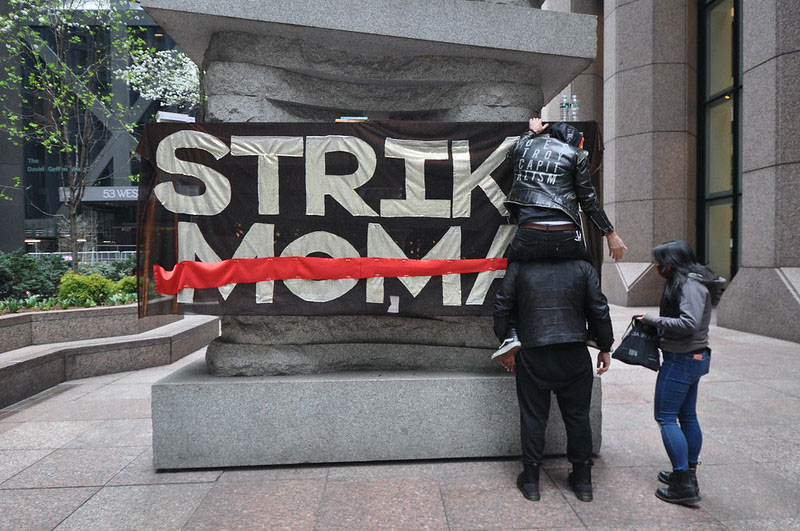
December 4, 2015; KQED-FM (San Francisco, CA)
In a new and troubling twist on months of stories about rent-burdened tenants being displaced as their neighborhoods go upscale, an audio op-ed on San Francisco’s KQED from author Patrice O’Neill explains the problem of nonprofits and small businesses being displaced by the commercial developments from across the Bay in San Francisco:
The influx of money into Oakland has been both charming and alarming. There’s a real danger that the people who made this town a vibrant place to live and work—most especially communities of color—are being forced out, and so are the small businesses and non-profits that fill downtown buildings. My national nonprofit has been based in downtown Oakland for over 20 years and we’ve seen the changes.
Ms. O’Neill is CEO of Not In Our Town, a national nonprofit working to stop hate and bullying. According to her, her situation is not unusual. The instant reason for the spike in office rents seems to be related to the announcement that Big Tech upstart Uber is setting up a headquarters office in Oakland—and “Uber neighbor equals über rent hikes.”
Ironically, the current squeeze in Oakland may be more than just Big Tech neighbors. Just two years ago, the East Bay Express reported that nonprofits were fleeing from San Francisco to Oakland in search of cheaper office rent.
While Ms. O’Neill wonders about governmental relief for the nonprofit community, indie journalist Lynda Carson points out that local government is fueling the gentrification engine:
Sign up for our free newsletters
Subscribe to NPQ's newsletters to have our top stories delivered directly to your inbox.
By signing up, you agree to our privacy policy and terms of use, and to receive messages from NPQ and our partners.
In all of Oakland’s plans for WOSP, [West Oakland Specific Plan] city officials and staff have refused to adopt any affordable housing requirements, claiming that it would be a disincentive for developers that would hinder them from investing in each neighborhood, thus creating lopsided development throughout the city.
Ms. Carson reminds us that it’s not just nonprofits leaving, so are their employees.
Urbanologist Richard Florida, in reviewing a new master plan for the Bay Area, suggests that top planners seem tone deaf to the needs of the underclass in the area and that condition probably extends to the nonprofits that serve the underclass. He argues, “It…fails to address how to deal with the area’s chronic and concentrated neighborhood poverty. […] Such measures will be required to ensure that those falling behind can once again join the ranks of the middle class—the backbone of a truly sustainable and resilient economy.” Perhaps the implicit strategy of the planners is a throwback to the 1950s-style “urban renewal” that writer James Baldwin referred to as “Negro removal.”
If pushing out low-income people is the implicit goal of government policy, then there may be no choice for nonprofits which serve the needs of marginalized local citizens except to plan to flee with their program participants. Like the urban parishes of 19th-century Rust Belt cities, community-based nonprofits could face evacuation, extinction or adaptation. Given the current pace of change in the 21st-century metropolis, the change won’t take decades—maybe not even one decade. The disruption of locality and ethnicity means that neither businesses nor individuals can expect to find a nurturing place to work. Maybe the organizations that work with the marginalized in their communities are equally likely to be marginalized themselves.
Ms. O’Neill’s organization with its national focus may be a different situation than the local recreation center. What could innovation options look like?
- Sharing space and services. Co-location in a nonprofit condo is an idea periodically proposed to house nonprofit place-based organizations. It is possible that a corporate or community foundation could acquire, rehab, and manage an office condominium where nonprofits can operate at reasonable rates. The donor “loss” on the operation is the donor’s charitable deduction.
- Going office-less using the high tech tools provided by the tech giants. Suggestion: Practice by adopting short experiments to identify problems and to assess staff reactions.
- Convincing nonprofit funders to revisit their aversion to “overhead” or “general program support.” At NonprofitQuarterly.org, Paul Hogan took on the problem of funding operations in “Gen Op vs. Program Support: A Funder Takes a Run at Reframing the Overhead Argument.”
Clearly educating funders on this issue is a longer-term approach to an immediate problem, but maybe this nonprofit crisis is a teaching moment.—Spencer Wells












